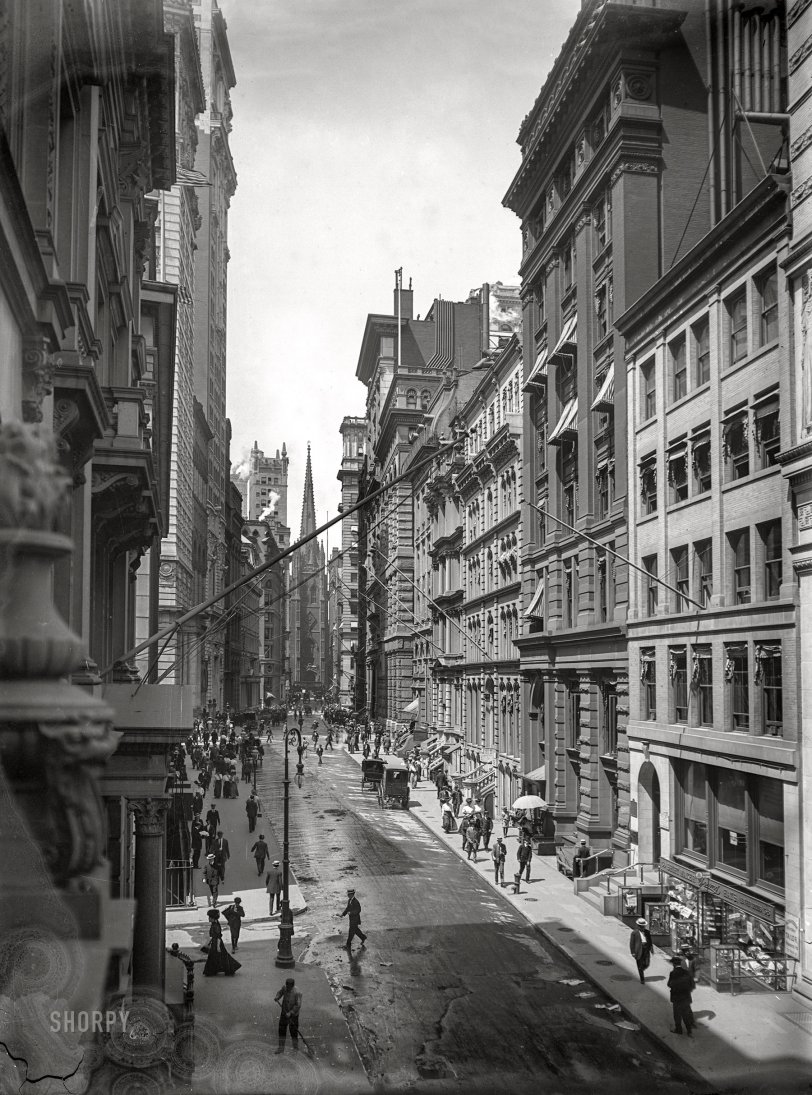


Framed or unframed, desk size to sofa size, printed by us in Arizona and Alabama since 2007. Explore now.
Shorpy is funded by you. Patreon contributors get an ad-free experience.
Learn more.

- Freeze Frame
- Texas Flyer wanted
- Just a Year Too Soon
- WWII -- Replacing men with women at the railroad crossing.
- Yes, Icing
- You kids drive me nuts!
- NOT An Easy Job
- I wonder
- Just add window boxes
- Icing Platform?
- Indiana Harbor Belt abides
- Freezing haze
- Corrections (for those who care)
- C&NW at Nelson
- Fallen Flags
- A dangerous job made worse
- Water Stop
- Passenger trains have right of way over freights?
- Coal
- Never ceases to amaze me.
- Still chuggin' (in model form)
- Great shot
- Westerly Breeze
- For the men, a trapeze
- Tickled
- Sense of loneliness ...
- 2 cents
- Charm City
- What an Outrage
- Brighton Park
Print Emporium
Corporate Canyon: 1910

New York circa 1910. "View down Wall Street to Trinity Church." Its steeple sharing the Lower Manhattan skyline with the obelisk-topped "Chimney Building" at 1 Wall Street. 6x8 inch dry plate glass negative by Robert L. Bracklow. View full size.
Carless
The scene is amazingly devoid of automobiles.
Walking there was wondrous
I strolled down Broadway past Trinity Church in early May 2011, Nikon in hand. There wasn't much time (to my great and everlasting chagrin I was with a group and was compelled to keep up), but I got some haunting photos of the graveyard through the wrought iron fence. The imposing bronze-to-verdigris statue of John Watts is mesmerizing in that setting. What an awe-inspiring place.
Magnificent Degradation
The emulsion degradation in the lower left corner of the plate is almost too lovely to believe. When else in life does decay bring beauty—an arthritic joint, blurring eyesight, a dimming mind? Almost never. This is a rare and exquisite example of silver halide chronologic alchemy, one which embellishes rather than detracts from the narrative and intricacy of the original image. There should be such an effect embedded in every photo editing software product— the pull down menu would show, “vignette,” “emboss,” ... ”mystic Mandelbrot mushroom margin,” or “mmmm” for short. I already fear someone’s prosaic reply: “It’s bloody mold, mate.”
A-spire to greatness
Architecturally, this may be called an example of perfect composition, though neither of the oddities that frame Trinity lasted very long: the aforementioned one on the left -- purportedly the most valuable spot in New York -- saw its flame extinguished in 1929, while the Gillender Building (on the right) went in 1910, presumably not long after this shot.
























On Shorpy:
Today’s Top 5